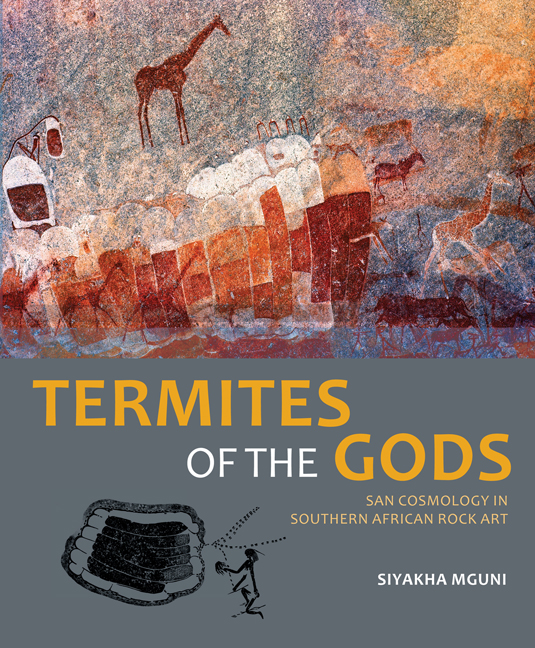Book contents
- Frontmatter
- Dedication
- Contents
- Acknowledgements
- Foreword
- Maps
- Explanatory notes
- Preface: Searching the pasts
- Introduction
- Chapter 1 Ancient mysteries on rocks
- Chapter 2 Meaning in San rock art
- Chapter 3 Tricksters, potency and dance
- Chapter 4 Ways of seeing San rock art
- Chapter 5 Probing deep into formlings
- Chapter 6 Formlings and San cosmological belief
- Chapter 7 Symbolic theatres of San cosmos
- Notes
- List of maps and figures
- Picture credits
- References
- Index
Chapter 5 - Probing deep into formlings
Published online by Cambridge University Press: 21 April 2018
- Frontmatter
- Dedication
- Contents
- Acknowledgements
- Foreword
- Maps
- Explanatory notes
- Preface: Searching the pasts
- Introduction
- Chapter 1 Ancient mysteries on rocks
- Chapter 2 Meaning in San rock art
- Chapter 3 Tricksters, potency and dance
- Chapter 4 Ways of seeing San rock art
- Chapter 5 Probing deep into formlings
- Chapter 6 Formlings and San cosmological belief
- Chapter 7 Symbolic theatres of San cosmos
- Notes
- List of maps and figures
- Picture credits
- References
- Index
Summary
Knowing what a figure represents is one thing; knowing what it means is another.
As in any rock art tradition, San images served different purposes in symbolic terms. The artists’ intent in communicating symbolism influenced the choice of features as well as the angles and details of their depiction – and it is here that the significance of formlings will be found. The artists’ intention was not to deceive by adding to the subject matter significant features that do not exist in their world of experience. Crucial questions therefore include the following: what is the subject matter of formlings? Which features were chosen for depiction and from which perspectives? As Christopher Chippindale pointed out, the relationship between the shape of the real subject and the shape of the depiction is a complex one. Even the way a painting is oriented may make it look odd, particularly to viewers who are not familiar with picturing manners in a specific cultural and artistic tradition. I approach formlings with this caution in mind and explore possible avenues for perceiving these images.
As the epigraph states, a central methodological problem in interpreting formlings concerns, firstly, their origin (what these ancient images depict), and secondly, their symbolic meaning(s). Formlings are intricate in so far as their interpretation involves these two levels of analysis, but this intricacy is not entirely unique in rock art research. Writers have approached this complication in two different ways. On the one hand, formlings have been interpreted as decorative patterns or simply as abstract designs. This aesthetic view is inconsistent with our understanding of San painting manners, the range of formling contexts and the corroborative San ethnography. The second approach sees formlings as depictions of natural and cultural phenomena; in other words, they have material references. In many early studies this latter approach ended with the identification of somewhat varied and incongruous subject matter that formlings were said to portray. As noted in earlier chapters, these suggested phenomena fell short of the range and complexity of formlings.
- Type
- Chapter
- Information
- Termites of the GodsSan cosmology in southern African rock art, pp. 90 - 119Publisher: Wits University PressPrint publication year: 2015



